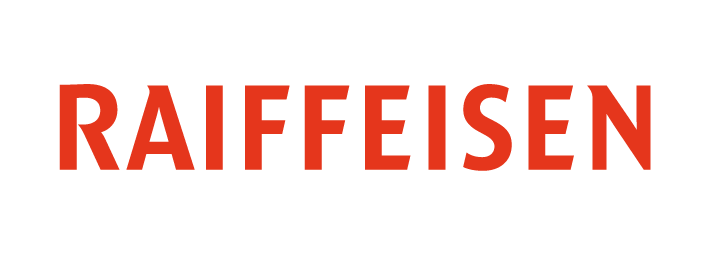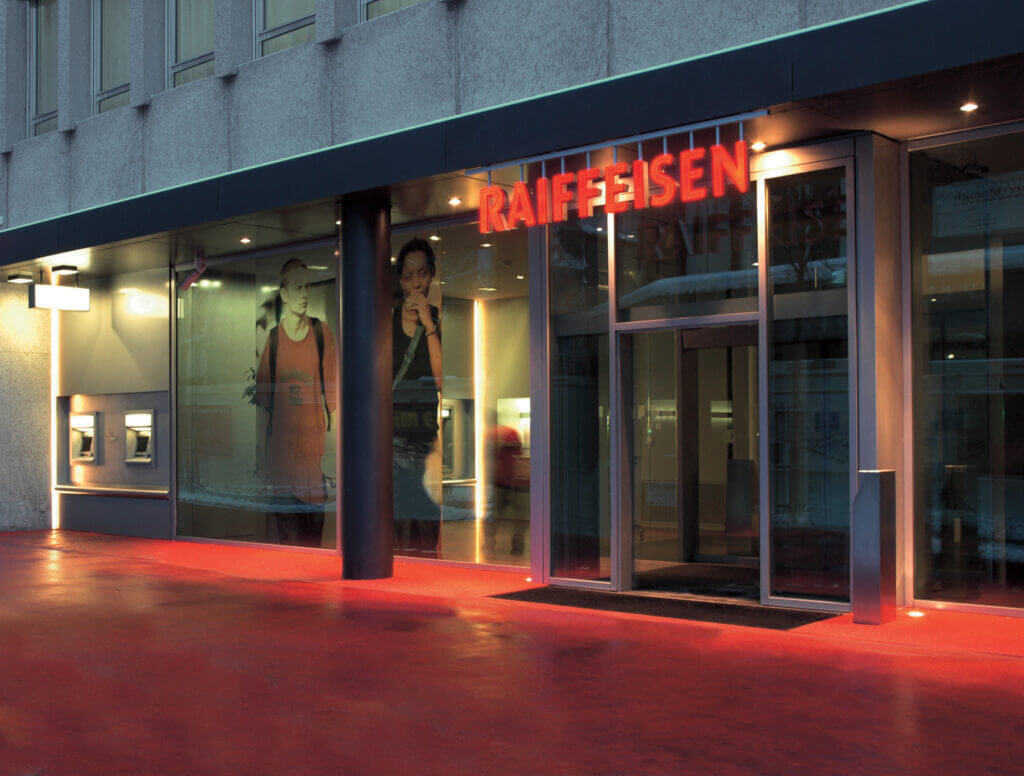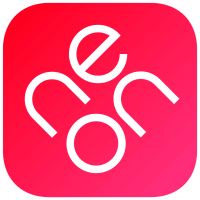Raiffeisen Bank Review 2024 – Pros & Cons
| Updated: |(Disclosure: Some of the links below may be affiliate links)
Raiffeisen is the third largest bank in Switzerland. Many people are using it, and many customers are even shareholders of the banks.
This bank has some unique characteristics that could make it interesting. For instance, you can become a bank shareholder! So, should you use Raiffeisen as your bank?
In this article, I review the Raiffeisen Bank, its banking features, fees, and its pros and cons. By the end of the article, you will know whether you should use Raiffeisen.
| Yearly fee | 40 CHF |
|---|---|
| Users | 1’900’000 |
| Card | Maestro |
| Currencies | CHF |
| Withdrawals in Switzerland | Free at Raiffeisen ATMs, 2 CHF at other |
| Withdrawals abroad | 5 CHF |
| Languages | French, German, and Italian |
| Custody bank | Raiffeisen |
| Depositor protection | 100’000 CHF |
| Established | 1899 |
| Headquarters | St. Gallen, Switzerland |
Raiffeisen

Raiffeisen is a large Swiss bank that was created in 1899. It is currently the third-largest Swiss bank (in terms of assets under management), behind the two giants UBS and Credit Suisse. Raiffeisen has more than 3 million clients in Switzerland, almost two million of whom are shareholders (more later). It is a very profitable bank, with about 400 million in profits these last few years.
This bank has an interesting structure. Indeed, each of the 246 Raiffeisen banks is independent. Together, they form Raiffeisen Switzerland, a cooperative structure.
Historically, Raiffeisen was a very rural bank, but it has moved to cities now and is present in many places. Raiffeisen wants to be a bank that belongs to its customers, so many customers are also shareholders.
Interestingly, it was created by a priest trying to help protect the money of his parishioners. This story is about how the banking system was born in many countries.
I used Raiffeisen about ten years ago when I was doing my apprenticeship. And I even invested in their funds (one of my mistakes). But this is before e-banking.
In this article, I focus solely on using Raiffeisen as a bank account. I do not go into their investment offer (but I would not recommend it).
Banking features

We should look at the features Raiffeisen offers for bank accounts.
You can access your account from the e-banking web application or one of the mobile applications on Android or iPhone. You can also do most of the operations directly in their offices. Access to their offices could be practical if you do not want a fully digital experience.
From the applications, you can do everything you need:
- See your balance and transactions
- Pay your bills (you can scan them with your phone)
- Pay e-bills
- Transfer money to other accounts
Not counting offers for young people, there are two main accounts available.
- Private account
- Private shareholder account
The two packages have the same banking features, but the fees differ, as we will see later. Private shareholder account holders have some unique advantages (see next section).
You can choose a V Pay debit card or a Maestro debit card with your account. If you intend to use it for payments, I recommend the Maestro since it is more widely accepted. They also have a wide choice of credit cards and prepaid cards.
You can use TWINT with your account to pay from your mobile phone. However, you can only use a Raiffeisen credit card to use Google Pay or Apple Pay.
So, overall, Raiffeisen will have more than enough features to meet your banking needs.
It is important to note that Raiffeisen is only available in three national languages: French, German, and Italian. Although you can probably find somebody who speaks English in an office, the website, and the apps will not be available in English.
Shareholder advantages

With Raiffeisen, you have the option of becoming a shareholder. As a shareholder, you are entitled to the private shareholder account (cheaper than the private account, more in the next section). But this will also give you some more shareholder advantages. These advantages are also called Raiffeisen MemberPlus advantages.
As a shareholder, you will have access to the following:
- Many museums for free in all of Switzerland
- Guided visits in museums at a discount price
- Many castles and other visits for free or at a discount price
- Cheaper day passes during the week in many ski stations
- Discount prices for many concerts and events
And on top of that, you can also get special offers depending on which Raiffeisen bank you are with. For instance, at the time of this writing, I saw these offers (among many others):
- 5 CHF discount on Happyland, in the Granges Office
- 15% discount on paintball in the Crans-Montana Office
- 20% discount on Aquaparc in the Bouveret Office
So, these advantages could be interesting if you enjoy museums or content and events. And many of the offers are also valid for your children. For instance, the museum will be free for up to three children.
It is hard to value this advantage because it highly depends on what you consume. For us, it will be close to zero per year, 10 CHF at most. But for some people, this could save them more than 100 CHF annually. So, considering this account, you should try to estimate its value.
To become a shareholder, you must buy a share of Raiffeisen. Depending on the office, one share is between 200 CHF and 500 CHF. Your share will return some interest (currently around 2%, maximum of 6%). Keep in mind that this is not a bond. The share has no duration. And the interest is not fixed but variable based on the performance of the local office. Usually, if you leave Raiffeisen, you will be able to get back the shares at the nominal value. But you need to pay attention to three things:
- The nominal value may have changed between when you bought the share and when you left Raiffeisen.
- The local office can refuse to pay back the share if they do not have enough money.
- This money is not covered by the bankruptcy protection scheme.
A Raiffeisen share has not been a risky investment, but it is not entirely safe either. That being said, you can invest more in their shares if you want. Depending on the Raiffeisen office, you can invest between 1000 CHF and 10’000 CHF.
Banking fees
We now examine the banking fees. I will only examine the CHF account, but Raiffeisen also offers EUR accounts.
The private and shareholder accounts have zero account management fees. However, you will pay 16 CHF for the annual account report with the private account (free if you are a shareholder).
Basic payments are free on the e-banking systems. Receiving money in your account is also free. SEPA payments in EUR will cost 1 CHF per payment.
You must pay 0.50 CHF per recurring order with a private account. They will be free with the shareholder account.
The Maestro (or V Pay) costs 40 CHF per year, but the first year is free with the shareholder account. They also have some credit cards, but they are not good options, so you should look elsewhere for credit cards.
Withdrawing money at the Raiffeisen ATMs is always free. However, using another ATM will cost you 2 CHF with a private account. As a shareholder, you will get 12 withdrawals per year for free.
They also have some high fees for payments with paper orders. But I do not think anybody still uses them.
You will pay at least 40 CHF per year with your Raiffeisen bank account. It is not perfect, but it is not that bad, either. But several things are cheaper with the shareholder account. The shareholder account is the only interesting option if you profit from the shareholder advantages.
User Reviews
We should look at what other users think of Raiffeisen.
For this, we can look at Raiffeisen’s review on Trustpilot. Unfortunately, there are only 13 reviews at this time. The average of 2.8 out of 5 is not great, but with so few reviews, it is hardly representative. Overall, people mostly complain about customer service, which is very difficult to reach and unhelpful.
To get more user reviews, we can look at the reviews of the app on Google Play. There are over 8000 reviews, with an average score of 3.3 out of 5. Overall, the reviews are not very useful since the bad reviews are about the app not working, and the good reviews are about the app working nicely. There seem to be some technical issues with the app, especially after updates to the app and updates to Android. On the other hand, many people seem to think that it works great. So, I would say that the reviews are right in the middle.
To finish, we can also look at the app reviews on the AppStore. There are 763 reviews (at this time), with an average score of 3.7 out of 5. The reviews are a little more positive here. On the other hand, it is funny to see that some 4-5 stars reviews say it does not work. But overall, the reviews say the same thing on Google Play.
So, overall, it seems to work great for many people, while many others seem to have many issues with the applications. So, opinions are very divided on Raiffeisen. But it seems more positive than negative overall.
Security
We also need to look at the security of using Raiffeisen as a bank account.
The web application and the mobile application are well secured with authentication and encryption. Interestingly, Raiffeisen offers a choice for second-factor authentication:
- Use your mobile phone (or a PhotoTAN device, 50 CHF) to scan a QR code on your computer and generate a code.
- Get a code by SMS on your phone.
These two options are good, and it is good that you have a choice. If you can, I would strongly recommend the first option. Indeed, SMS’s second factor is not the best choice (although much better than nothing).
In case of bankruptcy, the money in your private account is protected by up to 100’000 CHF by Esissuise. However, big banks are somehow less protected than small banks. Indeed, the limit of the protection is 6 billion CHF. Given Raiffeisen’s 1.9 million customers, the protection per customer is only about 3000 CHF.
Raiffeisen is in no trouble. If one of the small offices (and not the entire entity) were to go bankrupt, the other Raiffeisen offices would help bail out the bank. This structure makes it safer than some other big banks.
Overall, Raiffeisen is safe to have your money with. However, given its size, you should not expect much from deposit protection. As such, you should avoid having too much money there.
Alternatives
We should also look at some alternatives and see how they compare with Raiffeisen.
Raiffeisen vs Neon
All the services you need to pay, save and invest, in a neat package, with extremely good prices!
Use the poorswiss code to receive 10CHF!
- Pay abroad for free
- Invest with great fees
These days, the best Swiss bank accounts are digital bank accounts. So, we should compare Raiffeisen with the best digital bank, Neon.
Both banks have the same features. However, Raiffeisen has offices where you can perform operations. Neon is a digital-only bank, so you must do everything from the mobile application.
On the fee side, Neon is much better than Raiffeisen. Neon has no account fees and offers some significant advantages when using the card abroad and when doing international transfers.
Neon application is quite good, but you will only have a mobile application, no web application. Mobile-only can be a limitation, but this is by design for Neon.
Overall, I prefer Neon over Raiffeisen, but you must use your phone for this.
Raiffeisen vs Migros Bank
If you prefer a traditional bank, we should compare Raiffeisen and Migros Bank together. Migros Bank is my current traditional bank of choice.
Feature-wise, both banks will be extremely similar. They offer the same features, and both have offices to welcome you. Migros has many more places to withdraw money since you can withdraw it in any Migros shop.
Migros Bank is free. Raiffeisen will cost you at least 40 CHF per year, but this is not very significant.
One place where Raiffeisen is better is for applications. Migros Bank has a desktop and a mobile application, but they are all really bad. You are also required to have two devices whenever you transfer money to a new account.
Finally, Migros Bank seems to have a better reputation than Raiffeisen. Although they are both quite similar, I prefer Migros Bank for its fees and transparency.
FAQ
What are the avantages of Raiffeisen shareholders?
As a Raiffeisen shareholder, you get cheaper bank accounts and you get many advantages in museums and activities in Switzerland.
Who is Raiffeisen good for?
Raiffeisen is good if you are able to profit from the shareholder advantages, to go to museum for instance.
Who is Raiffeisen not good for?
Raiffeisen bank is not great if you are not a shareholder and becoming a shareholder is only interesting if you can use their advantages, such as going often to the museum.
Raiffeisen Summary

Raiffeisen is a large Swiss bank, with a long history. Each of the Raiffeisen bank is independent and grouped into a cooperative.
Product Brand: Raiffeisen
3.5
Raiffeisen Pros
Let's summarize the main advantages of Raiffeisen:
- Many shareholder advantages
- The security on the e-banking is good
- Safe bank
- Interesting structure
- Support for TWINT
- Support for e-bills
Raiffeisen Cons
Let's summarize the main disadvantages of Raiffeisen:
- Not the cheapest bank accounts
- There seem to be some technical issues with the applications
- Poor credit card offers
- No free debit card
- Poor Esisuisse protection in case of bankruptcy
- Users are not happy about the customer service
Conclusion
Overall, the Raiffeisen bank can only be interesting if you profit from the shareholder advantages. So, if you visit museums often or other attractions, you could save money with your Raiffeisen bank account. As such, you would be able to offset the cost of the bank account.
I would not recommend this bank if you do not profit from these advantages. There are cheaper and better alternatives out there. However, interestingly, this is one of the only banks that offers the possibility of becoming a shareholder.
Other than that, you should look at other alternatives:
- Neon, if you are looking for a free digital bank account
- Migros Bank, if you are looking for a cheap brick-and-mortar bank
What about you? What do you think about Raiffeisen?
Download this e-book and optimize your finances and save money by using the best financial services available in Switzerland!
Download The FREE e-bookRecommended reading
- More articles about Best banks
- More articles about Save
- Zürcher Kantonal Bank (ZKB) Review 2024
- Alpian Review 2024 – Pros & Cons
- Coop Finance+ Review 2024 – Pros & Cons


As an English speaker and probably not well enough in German I really struggle with Raiffeisen app. As mentioned it’s not in English. I don’t know how to wire money or even transfer it to an account (I opened a USD account). My wife who is German also doesn’t know how and I’d say because it isn’t intuitive.
Some notes on the members plus. We paid 500chf to receive the museum pass etc. but it turns out that this is only for one person n though it’s a shared account. I emailed Raiffeisen and they said it’s in my wife’s name and not applicable to both. As you mentioned in the article as price / value I don’t think it’s worth the price of the 500 CHf for what we get (originally wanted it for ski lift passes but doesn’t work for where we go either)
Also I tried to open an account and was rejected (Muri bei burn location) because I’m US citizen. Wife somehow was allowed to open one after we looked at buying a home and was approved for loan.
Thanks for the article I’ll probably check into neon. Or head to a bank to help me wire money / teach me.
I also got very confused because there are 10 or more Raiffeisen apps in the App Store and when looking most are in Russia or Bulgaria etc. not sure if these work with the Swiss bank. As RBI is in Austria and they have a different logo (yellow with crossed icon)
Hi Evan,
Thanks for sharing your experience! Sorry to hear that it was not great. I am not surprised that it’s not expat-friendly.
I think the 500 CHF is not lost, it is a share of Raiffeisen, and you should be able to get it back when you leave Raiffeisen.
Unfortunately, Neon will not accept you either because of US citizenship. I would recommend a large international Swiss bank like UBS in that case.
You have to be careful about which app you download. Normally, there is only one official app.
Please, in Bulgaria Raiffeisen it is the worst.
Their app has huge issues after every update. You can not change information (contact telephone number/email address/address etc.) online. Deductions take days before it is visible in the web application.
All the above was old school in the Stone Age, imagine in 2022.
Haha, at first, I thought you were trolling me! But there is indeed a Raiffeisen bank in Bulgaria. But it’s not the same bank as the Raiffeisen bank from Switzerland :)
Please which would you recommend, the credit suisse csx premium card or the Raiffeisen bank? I need to make local bank transfers as well. And shopping sometimes on aliexpress and amazon. Please which is better?
Hi Kingsley,
I would recommend neither, you should use something like Neon bank instead.
But if you really want to choose between these two, I would personally go with Raiffeisen.
Hi Poor Swiss, and congrats on the blog work.
I was wondering what are your experiences with PostFinance?
Me and my wife hold a joint account there and we currently pay zero fees.
We contributed each to our 3rd pillar and invested in their funds (that rank very highly on moneyland 3rd pillar investment fund comparison by the way).
On a relevant note do you have any comparison of these funds (PostFinance Pension 75 or 100) with performance of funds on VIAC (or other 3rd pillar fund providers not listed on moneyland)?
Hi Sol,
If you pay zero fees (just make sure you do not, most people think they do not pay but are wrong), the accounts are not that bad. But you are likely paying zero fees because you are using their funds.
Regarding the bank accounts, I have an article about PostFinance bank accounts.
Regarding their funds, they are really inferior to VIAC of Finpension 3a. I did not compare all of them, but I have an article about the best third pillars.
Thanks for the clarification and Interesting article you shared. Indeed I’m not paying due to having contributed 2x years x2 persons in 3rd pillar investment funds. Else it would be 5 fr a month for a joint account with my wife which is pretty ok. I am currently treating my post finance pension fund as my “Swiss” fund to balance for CH home bias (as you mentioned in the article they hold largely Swiss stocks) and compensate for my VT investment on IBKR. I am aware of the ~1% TER which now that I do the math feels quite high.
When choosing a fund, i looked into the historical performance minus costs presented in moneyland which ranked these funds as one of the most profitable (assuming historical data have enough future predictive value which is questionable..).
Probably next year I’ll consider VIAC or Finpension 3a.
Great work with the blog by the way, I really like your content!
Thanks for your kind words :)
Indeed, using historical data is debatable, but many sites compare them like this because it’s much easier. I prefer to compare some fundamentals like the index, the number of stocks, the size of the fund, and the price. But then, it’s more difficult to make a flashy article :)
Hi,
Android developer here.
It’s normal to have 5 stars review with users complaining. Users can always update their reviews. Rather common case, something doesn’t work and user complains and puts 1 star review. Team fixes it, user updates rating to 4 or 5 stars but leaves the comment.
Also important to notice that rating can’t be reset on Google Play Store but this is possible on Apple App Store. Some companies reset ratings on Apple App Store after big bugs or issues with lots of bad reviews. For that reason, the average rating might be slightly better for IOS but for such reason the amount of reviews is substantially lower.
Something to consider when doing such comparisons.
BTW: Love ur site. Keep it up :)
Hi Jose,
Thanks for sharing! I did not know it was common. I assumed it was coming from people that did not check the stars properly!
Also very interesting to know that ratings can be reset on Apple Store, I had no idea!
I really do not recommend Raiffeisen Bank to nobody. Be aware that they allowe to third parties to retreat money from your account, u announce them and reclaim your money back and they didn’t even bother to announce you that they won’t do nothing about. You find out when tired of waiting for a response, u call back. And that’s not all, they continue to allow that third parties to take money, monthly, or twice/month and not doing anything about it. They told me to resolv alone my issues giving me a link that includes “unauthorized payment”…. It is your choice to open an account with this bank, but be aware!
What do you mean they allow them? Normally, a bank would not allow anyone to withdraw without your consent.
Bonjour, très bon article. Les frais ont l’air moins cher que chez BCGE.
Savez vous s’ils proposent un compte de Caution bancaire afin de servir de garantie pour les régies en cas de location d’un appartement?
Je sais que la BCGE le fait pour des frais initiaux de 20chf en 2020.
Please comment in English on English articles.
They have a rental guarantee account, but apparently, the conditions are different for each of the sub-companies. I am not sure they will be better than BCGE.
Great review as usual.
Are they opening accounts for non-residents as well? Any other Swiss banks open to non-residents? (that don’t require 7 figure deposits and ginormous fees)
Given that it’s a local bank, I would be surprised if they opened bank accounts for non-residents. I have never done that, but I know that most non residents use either UBS or CS.
I don’t understand why I would even bother choosing these guys over Zak or Neos. Really. Zak is actually quite a decent product, a bit buggy here & there, has a retarded implementation of Visa virtual card but other than that, it provides a solid fin. product wrapped in a decent mobile app and has all of the security a normal bank provides (license, protection schemes, savings, investing, etc).
Hi Alex,
I would also agree that as long as you do not mind digital banks, today, the solution is Neon or Zak.